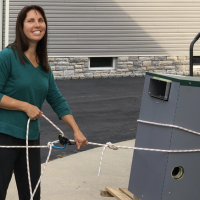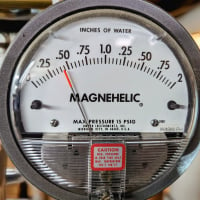Best Of
Re: Radiant Panel?
That is the smart WiFi plug it plugs into. Here’s how it looks in the app.
Re: Radiant Panel?
Because this is for such a small space as a mudroom, I would avoid touching the main system. I would go for a small electric wall heater. I recommend the "Envi Wall Heater." It is 500 watts and a standard 120V plug-in heater. Used as supplemental heating, it will bump this rooms BTU up enough. I have one mounted in my upstairs hall which never got its own cast iron rad (old builders guides I've read from the early 20th century stated one should have been installed in the upstairs hallway).
With the thermostat engaged, costs come to $0.04 per hour with my local electric utility rates ($.161 per kwh). Even if I leave it on full blast 24/7, costs come to $0.07 per hour. I have all my supplemental heaters connected to smart plugs with energy monitoring so I can see exact cost.
Re: Real efficiency gain potential vs sales fantasy vs as installed efficiency.
Minor thoughts. Disregard at you pleasure…
The thing to remember is that we should, properly, be looking at the total system efficiency, or at least total from the delivery of X amount of energy to the facility in question to final output, which is — or should be — the comfort. We often don't do that. In hot water, for instance, we don't usually investigate the tradeoff between piping design and pump requirements. In forced air, we a very casual about duct losses vs. blower power or heat loss. And so on.
We tend to concentrate on one piece (such as the boiler or furnace) and draw conclusions or recommendations. Or we worry about gains in pump design, but not flow conditions. And so on.
As several above have pointed out, the major gains in individual component efficiency are well known and generally applied. Most of the minor gains still available come at a pretty stiff cost.
And nothing can compensate for poor installation of improper use of controls…
Re: undersink water heater for dishwasher?
Have you searched assiduously for a replacement heater on the interwebs? If you can't find a new one, somebody might just have one on eBay, or perhaps a machine of the same make & vintage that has a working heater. In the past six months I've repaired my dishwasher, microwave oven, washer and dryer, so I've been down this road a few times and might be able to help if you can tell me the details.
Re: Johnson control training
I was looking for something in the Heating Help library and came across this, hope it helps.
Re: New Century House with Two Pipe Steam - Questions
The boiler return trap is in the LAOSH. The alternating return trap puts water back in the boiler when you don't have enough stacking height for the condensate to return.
It is basically a steam powered condensate pump.
Re: first day with new vent mains and vaporstat
Yep, this is short cycling. But I wouldn't worry about it as it sounds pretty typical for an oversized boiler. What is your measured radiator EDR and the capacity of your boiler?
I have an oversized boiler and I've installed a vaporstat. I cycle on pressure when it gets below 30F outside. Some things to consider:
- Perhaps raise your cut out pressure a bit to say 12-14oz and your differential to 8-10oz less than your cut out. Still very reasonable pressures and the wider differential gives the boiler a bit more time between cycles.
- My system works best when I "set it and forget it". I've found no measurable financial savings when using setbacks. I keep it at 68F and it cycles much less, especially since there is no recovery. Perhaps on a perfectly sized and balanced system this wouldn't apply but on my oversized system it does more harm than good.
Re: Real efficiency gain potential vs sales fantasy vs as installed efficiency.
The true gains come from switching to heat pumps. If natural gas’s best CO2 Lbs/ MMBtu output is about 120 lbs CO2, a COP 3 heat pump using the grid average is already at 78 CO2 Lbs/ MMBtu output (obviously this number is constantly changing).








